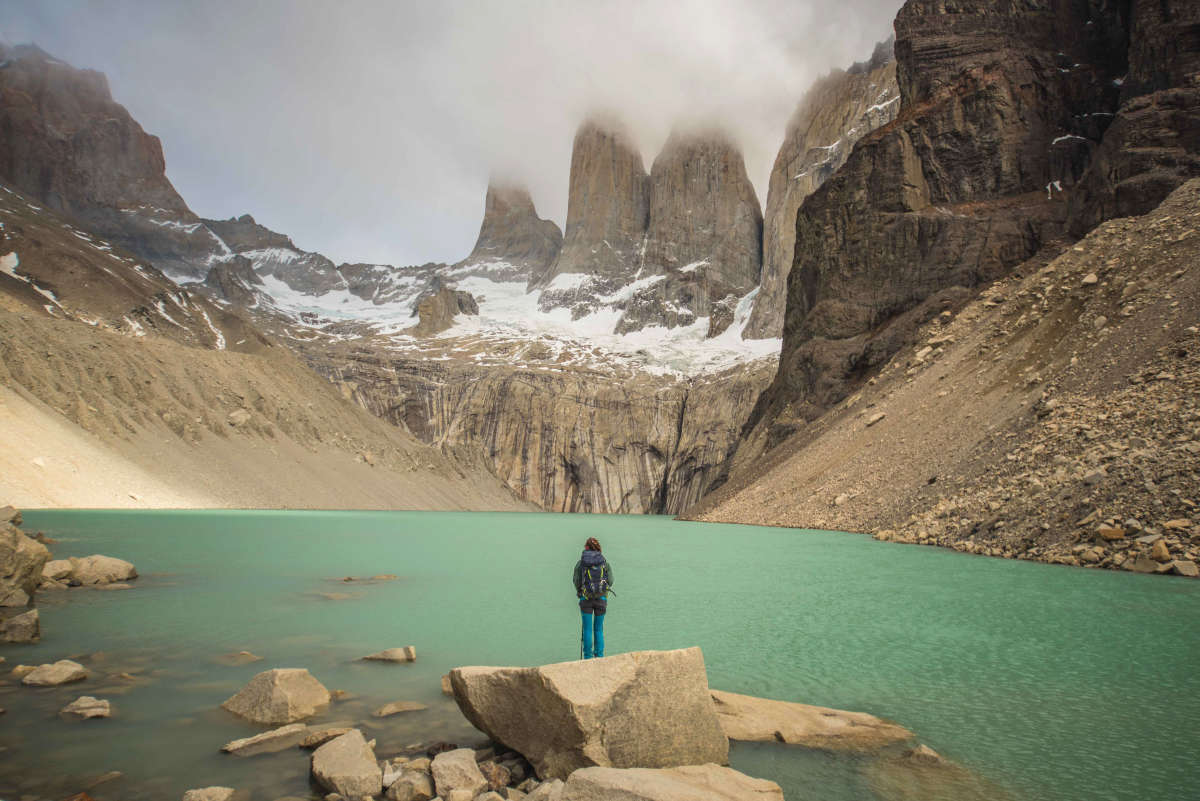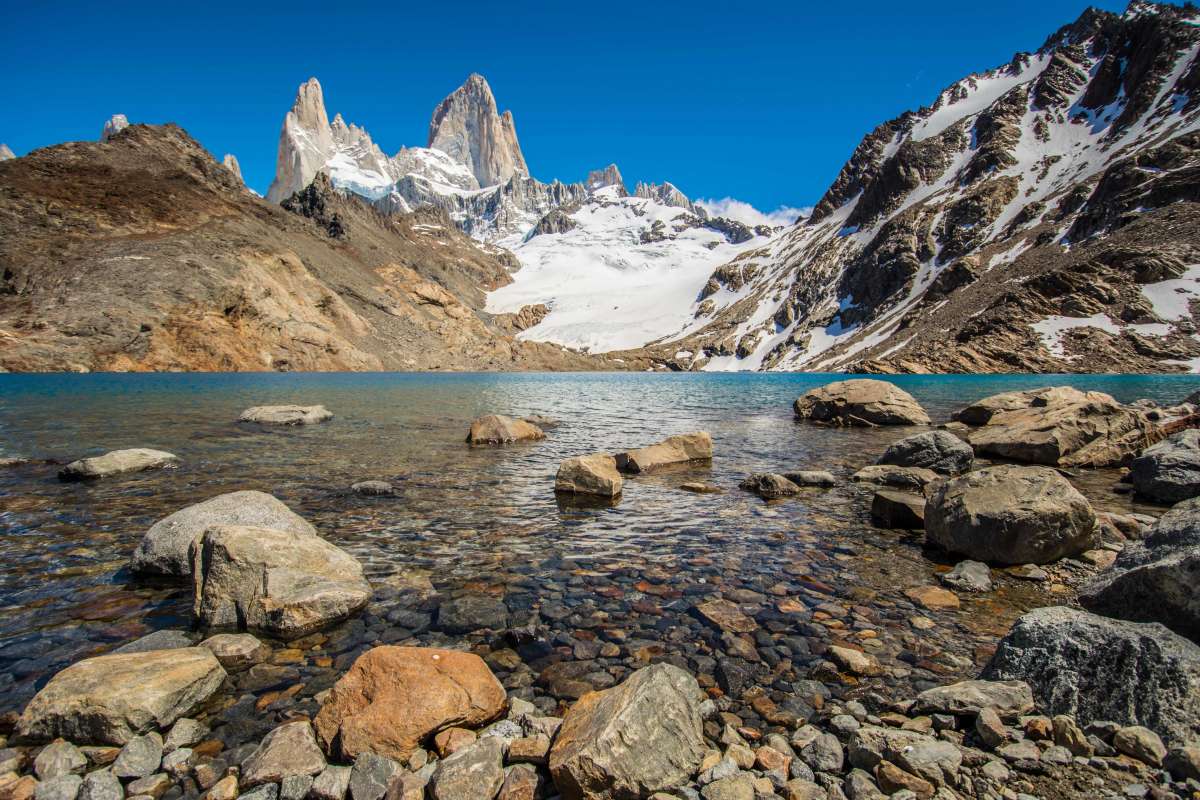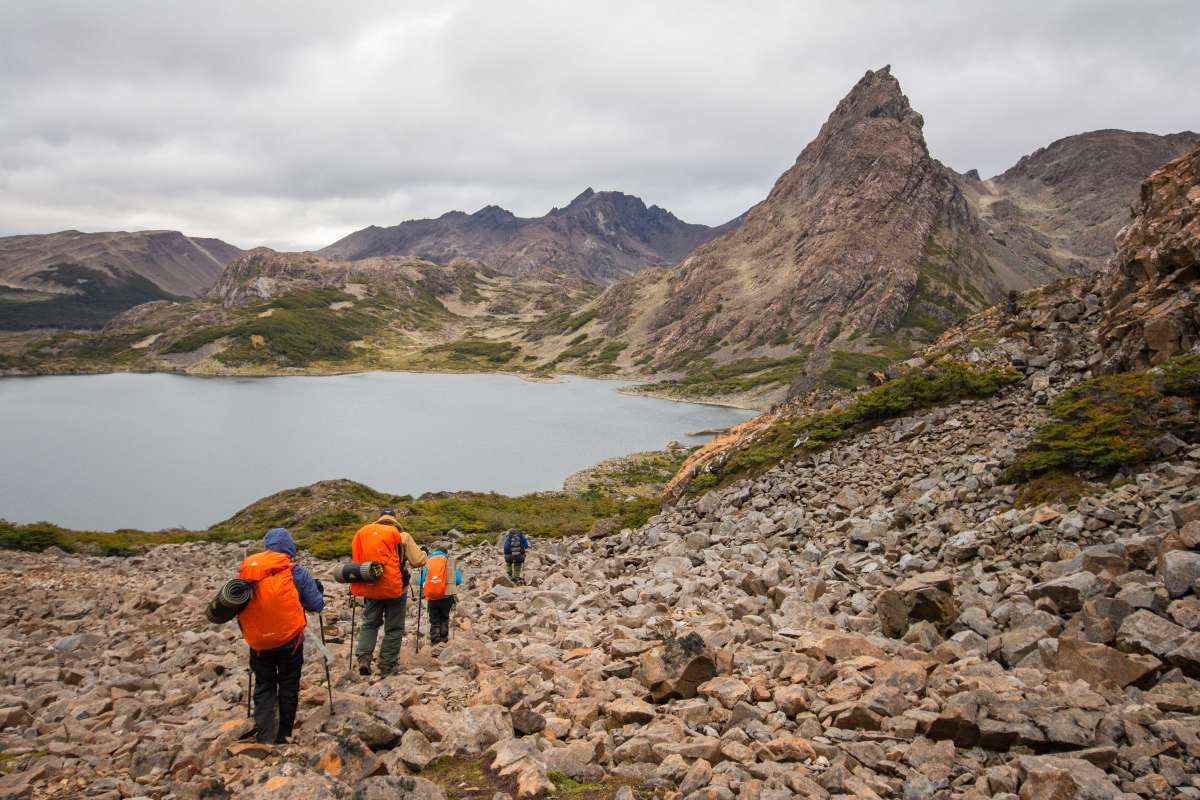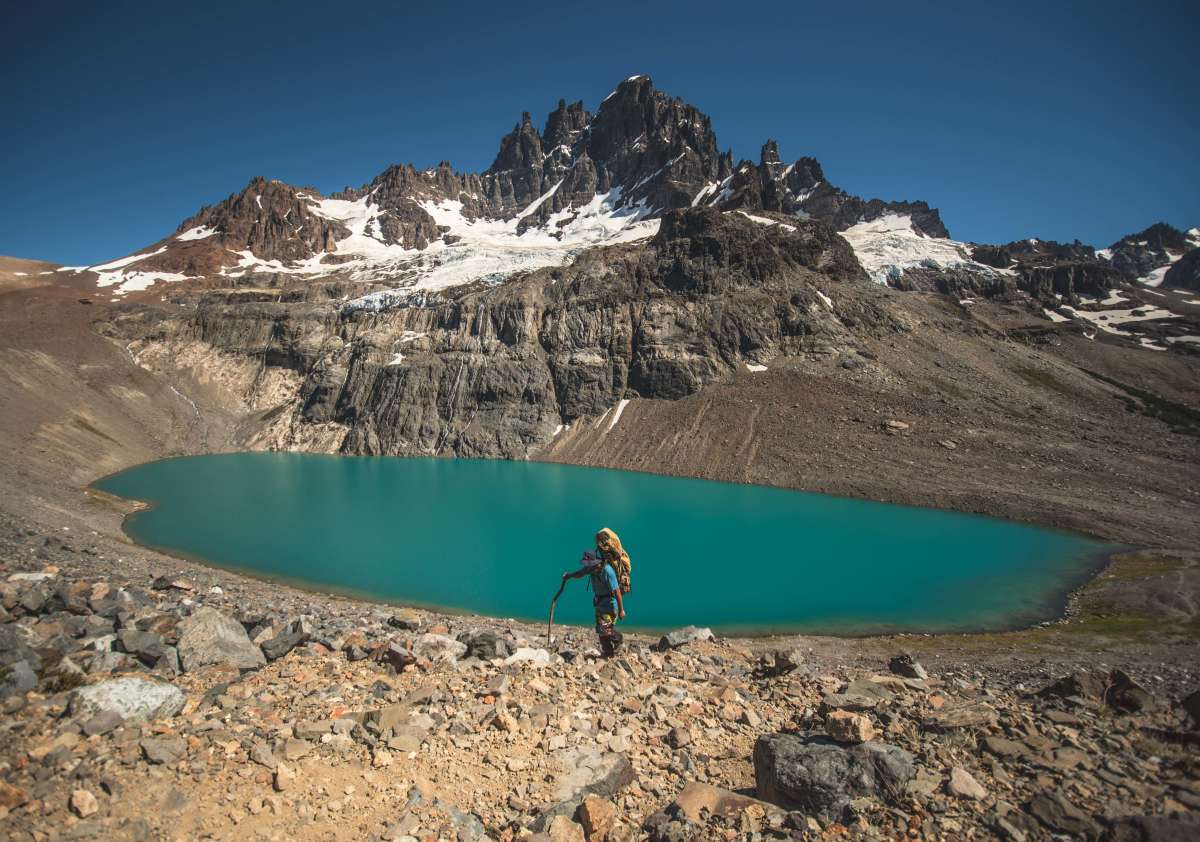These are the Best Hikes in Patagonia
Lace up your hiking boots : these are the best multiday hikes at the edge of the world!

Patagonia is huge. The southernmost region on Earth has 1,043 million square kilometers for you to explore. And while most travelers aim to Torres del Paine National Park in Chile or los Glaciares National Park in Argentina, the area is full of epic hiking trails. Some of them are unspoiled and not easy to reach. However, the experience often gets better on the most remote hiking trails, where you can experience true wilderness in otherworldly landscapes.
That’s the magic of Patagonia. The region is known for its low density of population, and you may see more guanacos (or eventually pumas!) than humans. In short, if you’re a hiker, this is Heaven on Earth. Lace up your hiking boots, these are the best hikes in Patagonia!
1. The W Trek (Torres del Paine National Park, Chile)
 The towers' base in Torres del Paine National Park
The towers' base in Torres del Paine National Park
This W-shaped hiking trail is the most famous multi day hike in Patagonia. For some reason, many hikers consider the towers’ base and French Valley as the most beautiful spots in Patagonia. And while it is true there are plenty of stunning mountains in the region, nothing can be compared with the granite towers that made Torres del Paine so famous.
The W Trek is not a difficult hike. You do need some previous training, but if you’re a regular hiker you’ll just have fun. There is plenty of infrastructure, which makes the experience more comfortable as you can stay in some of the cozy refuges with hot showers and spacious dormitories. There are even some wonderful hotels along the way! However, the highlights of the W Trek - Grey glacier, the towers’ base and the French valley - will definitely make you sweat. But the rewarding viewpoints are worth every drop of sweat!
This is definitely one of the most photogenic hikes on Earth. You can complete the W Trek in 3 to 5 days, and if you come in high season (from November to early March) make sure you book the campsites, refuges or your hotel room with at least 6 months of anticipation : it can get crowded down there! Another epic trek in the area is the full Torres del Paine Circuit, a 360° demanding one-week trek around the Torres del Paine mountain range. For the most adventurers only!
2. Laguna de los Tres & Cerro Torre (El Chaltén, Argentina)
 Laguna de los Tres
Laguna de los Tres
El Chaltén is known as the capital of hiking in Argentina. This small mountain village located in the very heart of Los Glaciares National Park (roughly 2,000 inhabitants) is the starting point of many adventures. The absolute highlights of the region are Laguna de los Tres and Cerro Torre.
Laguna de los Tres is a 22-kilometer (13mi) hike to the most famous postcard in Argentine Patagonia, the great Mt. Fitzroy (3.359m.a.s.l.). This majestic spire of granite is a legendary mountain that every traveler should know (you can see it in the brand logo of the clothing company Patagonia). Getting there is demanding, but the beauty of the scenery will make you forget how exhausting it can be. You’ll cross a beautiful nothofagus forest and hike along a beautiful hanging glacier before reaching the moraine, a one-hour uphill to the iconic viewpoint. This full-day hike is a must-do if you travel to Argentina!
Cerro Torre is another classic hike in the region. This 18-km (11mi) trail is slightly easier than laguna de los Tres, as most of it is relatively flat (there is nothing really flat in Patagonia). You’ll hike along a river for a couple of hours before reaching one of the most spectacular viewpoints in Patagonia, the Cerro Torre viewpoint. You’ll meet another legendary granite spire, Cerro Torre (3.128m.a.sl.l.). This mountain is known as one of the most difficult mountains to climb in the world, which makes it extremely popular amongst professional climbers. Of course, you won’t reach the mountain, but the viewpoint - with a glacier lake and some wandering icebergs - is stunning enough to justify a full day hike.
3. Los Dientes de Navarino (Chile)
 Walking through the Dientes circuit
Walking through the Dientes circuit
Welcome to the southernmost hike on Earth! Reaching Navarino island is an adventure in itself. You must fly from Punta Arenas (or sail from the nearby Ushuaia in Argentina) and land in Puerto Williams, nothing else than the official southernmost city in the world. Turbulences are usual in this remote island, not far from Cape Horn (the southernmost point of the American continent). You can fully experience this wild weather on the Dientes de Navarino, a 4 to 5-day trekking circuit that starts and ends near Puerto Williams.
Dientes de Navarino can be literally translated into the “Teeth of Navarino '' and for a good reason, with these dramatic spires that have helped sailors identify the island for centuries. While the trail is not long in distance (“only” 36 kilometers / 22 miles), it can get serious because of the hazardous weather conditions. The hike is recommended only for experienced hikers, as you won’t find any refuge here - only some basic campsites (forget about hot showers!) - and it is usual the trail disappears in case of snowfall (even in summer).
Some viewpoints are absolutely stunning, such as the Guanaca lagoon and Paso Ventarrón, from where you’ll be able to contemplate the immensity of the Ocean and the end (or beginning) of America (the continent!).
4. Cerro Castillo (Chile)
 Cerro Castillo has some (very) rewarding views!
Cerro Castillo has some (very) rewarding views!
If you don’t know the “Carretera Austral”, you’d better check it out now! The “wildest road” in Patagonia is the best road trip you can think of, with about 1,200 kilometers (745 miles) of pristine landscapes in Chile’s Aysén Region. This huge area in Northern Patagonia is known for the Northern Patagonian Ice Fields, the lush green forests and the incredible mountains that stretch as far as the eyes can see.
In the very heart of the Carretera Austral, you’ll find the Cerro Castillo National Park, an area that was made famous for its striking peaks and turquoise blue lakes. A hikers’ paradise, Cerro Castillo is worth a 5-day hike. It is highly recommended you hike there between October and March to avoid the snow on the trail and to make the best of your hiking days, with more sunlight and enough people to make it a safe experience.
There are no refuges in the area - only basic campsites - which make it an epic trekking adventure for the most experienced hikers. Cerro Castillo is located about one hour and a half away from Coyhaique, so you’ll have to fly to this remote city from Santiago de Chile before heading to this amazing national park.
Which hike do you think was made for you?